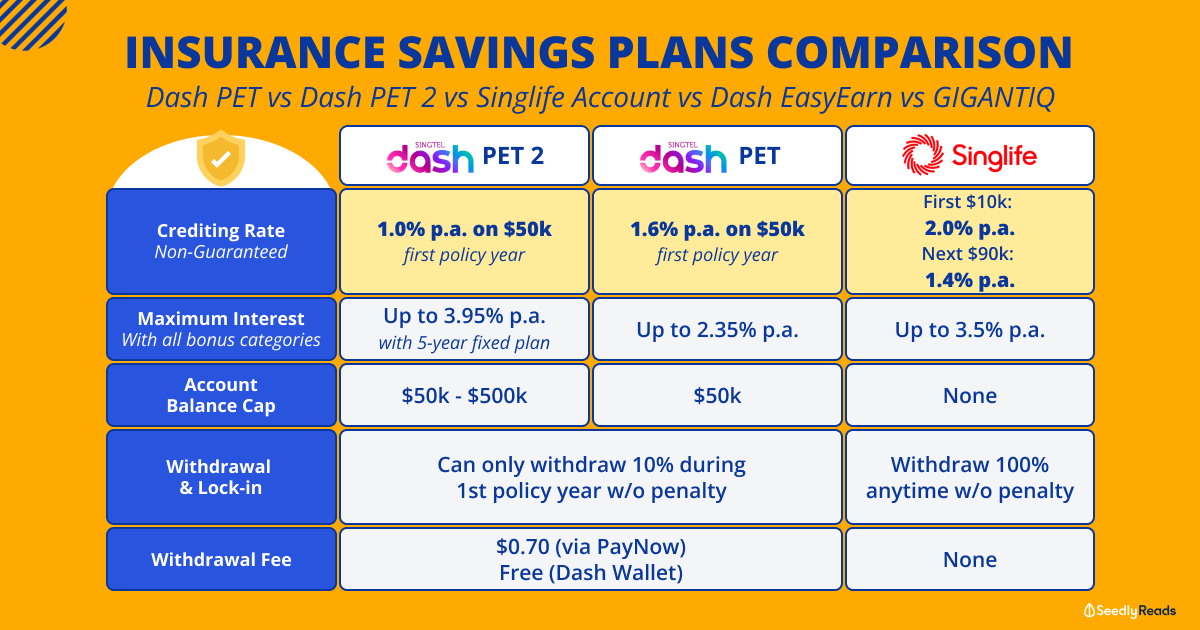Advertisement
Discussion (3)
Learn how to style your text
Eric Chia
09 Oct 2019
Senior Financial Consultant at Prudential
Reply
Save
Elijah Lee
03 Oct 2019
Senior Financial Services Manager at Phillip Securities (Jurong East)
Most insurers offer various plans to cover CI, so you will want to consider what sort of plan you'd prefer. To help you understand the market better, I will share my own experience with my clients. From what I have been assisting clients with so far, the most commonly obtained type of plans are (in no particular order):
1. Term plan (covering death/TPD) with a CI rider (Rider can be for late-stage CI, early-stage CI, multi-pay CI or a combination)
Usually level premiums, which you pay for the duration of the plan
Your coverage is for the duration of the plan and will be a level amount
Once the plan ends, the cover stops. No claims mean no payout.
Multi pay rider will allow recurring claims
No cash value
2. Pure CI plan (can be multi-pay or a single payout)
Usually level premiums, which you pay for the duration of the plan
Your coverage is for the duration of the plan and will be a level amount
Once the plan ends, the cover stops. No claims mean no payout.
Usually negligible death cover
May have a cash value
Multi pay rider will allow recurring claims
3. Whole Life Limited Pay with CI Rider (Rider can be for late-stage CI, early-stage CI, multi-pay CI or a combination)
Usually level premiums, which you pay a certain number of years (5,10,15,20,25 years)
Your coverage is for life or till 99/100 and will be increased over time by the bonuses declared
Option to boost coverage during your prime working years with a 'multiplier'
For plans that cover till 99/100, should you be blessed with longevity, the plan will mature and pay you the coverage amount + accumulated bonuses
Multi pay rider if added will allow recurring claims
Has a cash value
Other less commonly purchased plans include, for example, CI plans that are aimed at helping people with pre-existing illnesses get coverage.
Seek to understand what sort of plan may suit your requirement so that you know how you are covered and what amount of payout you will receive under various scenarios. Once you have an idea of what type of plan may suit your needs, then you can narrow the search to the insurers that have such plans, and do a comparison across that particular type of plan.
Most insurers carry types 1,2 and 3, so you can get quite overloaded with the information available. Also, there may be still minor differences between the plans which will probably require an independent financial advisor who is well versed with the plans to explain the differences to you in order to help you come to a decision. For example, for Whole Life Plans with a multiplier, some insurers pay an inflation-adjusted payout, whereas some don't. Understanding these features may aid you to decide what kind of plan will suit you.
Reply
Save
Hariz Arthur Maloy
03 Oct 2019
Independent Financial Advisor at Promiseland Independent
This is a good place to start [https://www.businesstimes.com.sg/opinion/naviga......
Read 1 other comments with a Seedly account
You will also enjoy exclusive benefits and get access to members only features.
Sign up or login with an email here
Write your thoughts
Related Articles
Related Posts
Related Products

Income IncomeShield Integrated Shield Plan
4.4
306 Reviews
NTUC Income IncomeShield Integrated Shield Plan Preferred
$1,500,000
LIMIT PER POLICY YEAR
180 / 365 days
PRE & POST HOSPITAL
As Charged
OUTPATIENT BENEFITS
Private Hospital
WARD ENTITLEMENT

Raffles Shield Integrated Shield Plan
4.5
83 Reviews

AIA HealthShield Gold Max Integrated Shield Plan
4.2
20 Reviews
Related Posts
Advertisement







Most insurers follow standard definitions for critical illnesses set by LIA, but the 2019 Framework would only be available in products next year (see here).
To shop for CI plan, you may like to look at the definitions of early-stage CI, which varies from one insurer to the other, and also any peripheral coverage that comes with the plan, e.g. diabetic complications, osteoporosis, which are not included in the CI listing. Pick the ones which offer the definitions that you can accept.
You should also size up how much coverage you need, and then check lastly if the premiums are within your budget.